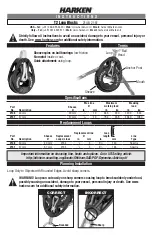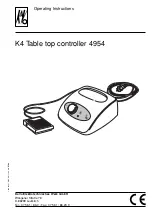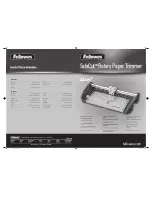
Redox/ORP Electrode User Guide
Table 2– Typical Redox Titration Methods
Unknown
Interferences
antimony (Sb
+3
)
As, Fe, SO
2
,
V, and organic
substances
arsenic (As
+3
)
other reducing agents
hydrogen peroxide
(H
2
O
2
)
preservatives present in commercial
H
2
O
2
may interfere
hypochlorite ion (ClO
¯
)
or chlorine (Cl
2
)
Br
2
and other oxidizing agents
interfere by liberating I
2
iodine (I
2
)
other reducing agents
iodine (I
2
)
direct sunlight, high acidity, copper
salts and other catalysts promote air
oxidation and cause false high results
iron (as Fe
+2
, Fe
+3
or in steel)
high levels of organic acids, such as
acetic, oxalic, tartaric, and alcohols;
F¯ if present in more than trace
amounts; Cl¯, PO
4
-3
(remove by
adding acid)
iron (as Fe
+2
, Fe
+3
or in steel)
other reducing agents
manganese (as
permanganate Mn0
4
¯
)
other oxidizing agents
manganese (as Mn
+2
) other reducing agents
stannous tin (Sn
+2
)
other reducing agents
sulfur (as sulfur
dioxide SO
2
)
S
-2
and SO
2
-2
, remove by shaking
with CdCO
3
and filtering
thallium (Ti
+
)
other reducing agents
thiosulfate ion
(S
2
O
3
-2
)
S
-2
and SO
2
-2
, remove by shaking
with CdCO
3
and filtering
uranium (as uranyl ion
UO
+2
)
other reducing agents
Zinc (Zn
+2
)
other reducing agents
Summary of Contents for REDOX/ORP 9678BNWP
Page 2: ......









































